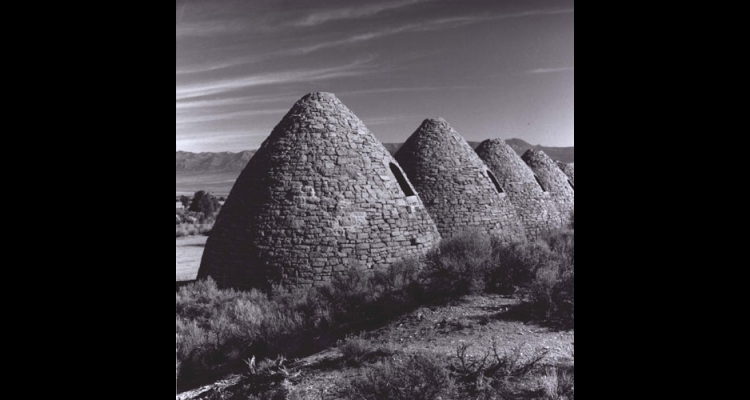Ward Charcoal Ovens
The Ward Charcoal Ovens are the main attraction of a state park in White Pine County fifteen miles south of Ely. The ovens take their name from Thomas Ward who founded a local mining district in 1872. The local gold and silver ore required the high burning temperature of charcoal for milling, inspiring the construction of the ovens in the mid 1870s. The design of the beehive ovens caused heat to be reflected back on the wood as it slowly burned to produce charcoal. Each of the six ovens stood thirty feet tall and was twenty-seven feet in diameter at the base.
The technique of burning wood to produce charcoal traces its roots to traditional Old World practices. Centuries ago, woodchoppers found that slowly burning timber in an oxygen-starved environment produced charcoal, which was easier to transport and burned at a higher temperature than wood. Charcoal production was especially common in the Alps, in Scandinavia, and in Eastern Europe. Charcoal burners traditionally used shallow pits without the benefit of permanent structures.
Immigrants brought the technique of charcoal burning to Nevada mining districts where it was particularly useful when milling stubborn ore bodies that required high temperatures. The charcoal burners consumed pinyon and juniper, which was of little use for building or for mine supports. The industry earned a place in Nevada history with the famed Charcoal Burner's War of 1879, when Italian and Swiss immigrants fought wealthy mill owners of the Eureka Mining District to the east of the Ward mines.
The Ward charcoal ovens were active during the late 1870s. Each oven could burn thirty-five cords of wood at a time, producing over one thousand bushels of charcoal. The entire process of loading, burning, and unloading took thirteen days. Similar ovens are scattered throughout Nevada. Generally they were short lived because deforestation moved production elsewhere or local mines exhausted ore bodies eliminating the local need for charcoal.
After suffering from vandalism and natural erosions, the long-abandoned ovens became a state park in 1957. In spite of damage, they remain some of the best in the state.
Article Locations
Related Articles
None at this time.
